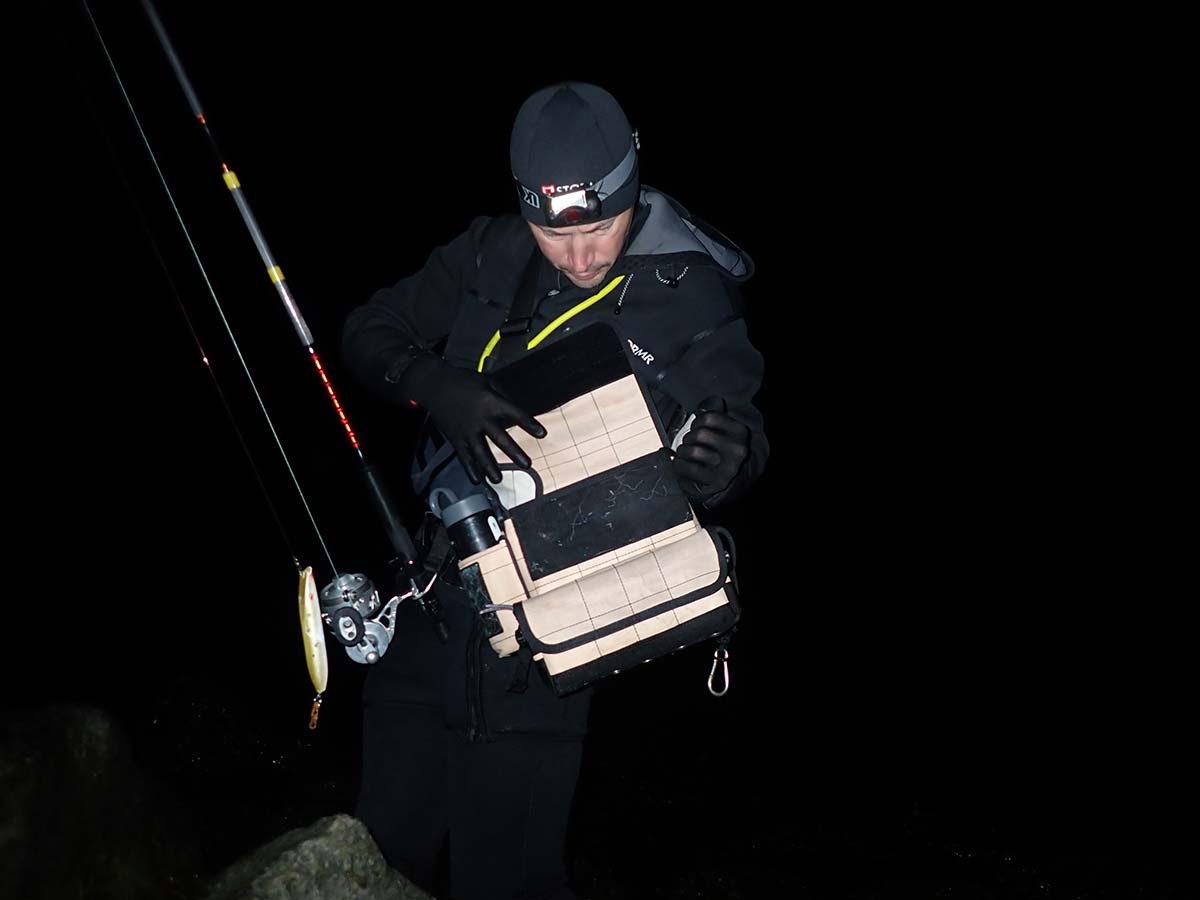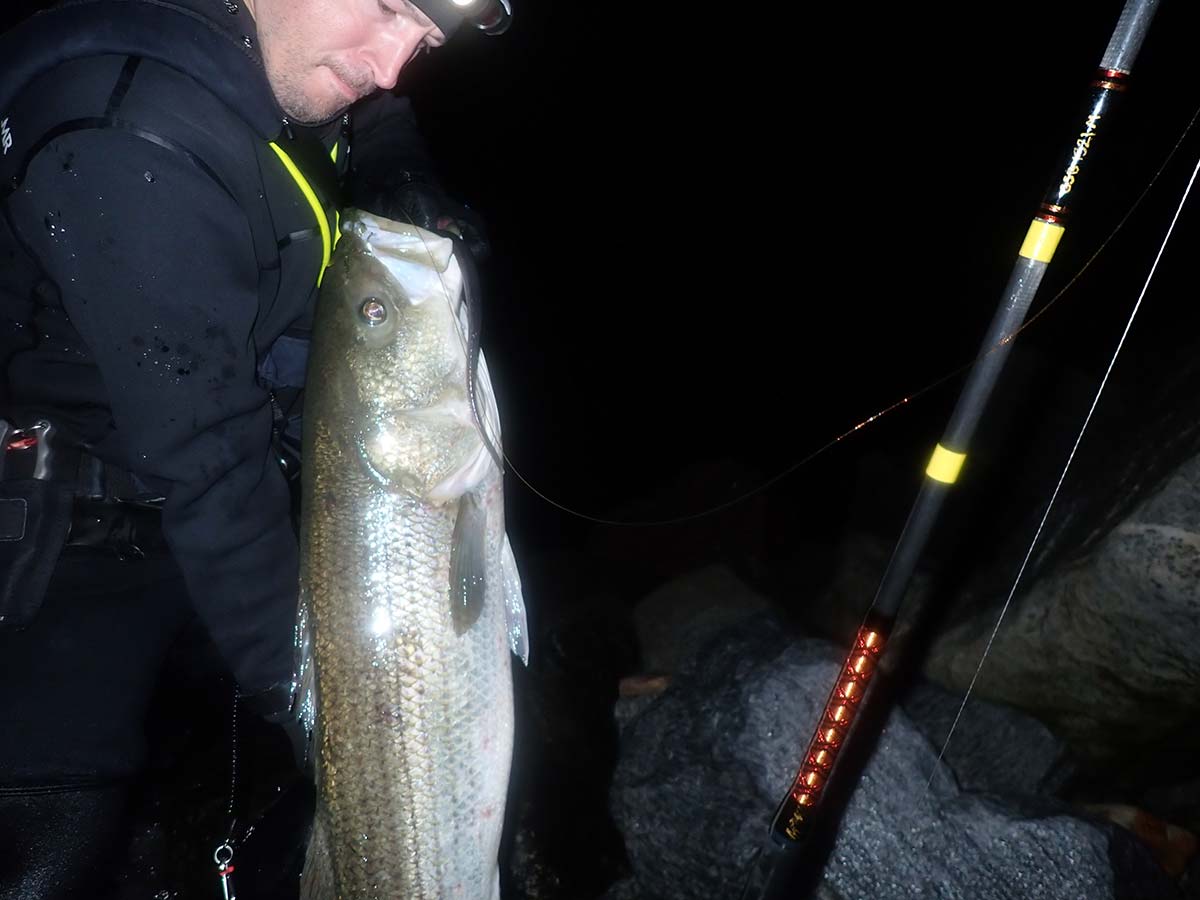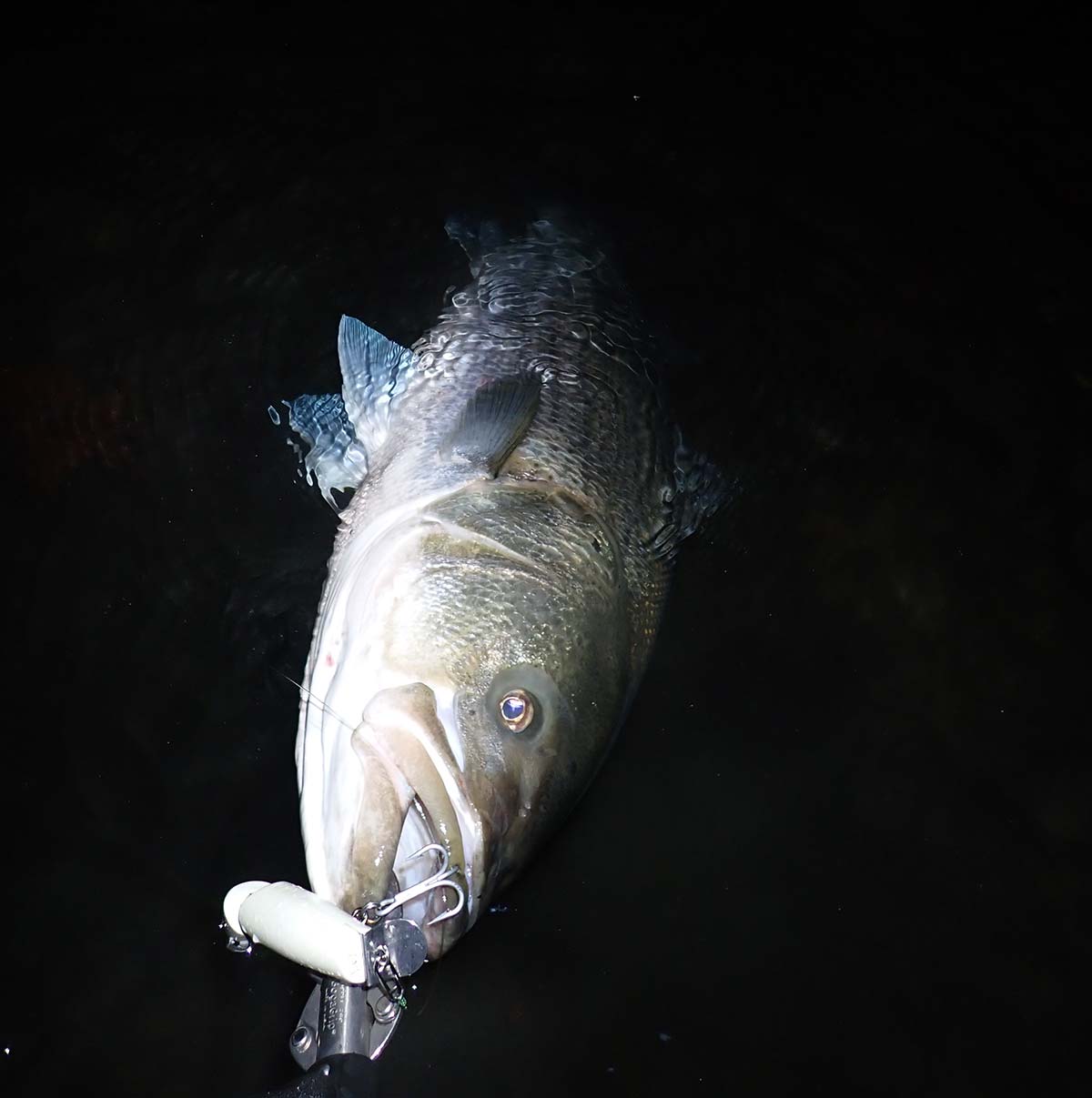
Know when to hold ‘em, and when to fold ‘em, to maximize your results in the surf.
With the arrival of the first of the fall-like conditions some three days prior I was admittedly a little late to the party as it had been almost a week since my last outing in the surf. A handful of family obligations and a desire to spend a night hunting blue crabs in my local marinas delayed my getting out in the surf. Couple in the fact that the 2020 surf season has been—to put it mildly—poor has seen motivation tough to come by of late. That all finally aside, I packed my surf bag with the usual assortment of plugs and decided the back end of a hard northeast blow might just be enough to improve on my last outing which, while it produced numbers of striped bass, lacked any real quality as I topped out at about 15 pounds.
So with high tide a solid hour after my son was put to bed I hopped in my truck and made my way to the surf. I opted for the wetsuit in case the 6-foot-plus waves which had been hammering the shore earlier in the day had not yet subsided. Arriving at the water’s edge the surf was down but still bumping with 2- to 3-footers rolling in every few minutes and smaller waves in-between. The water was also a good color of ‘coffee with a couple of creams,’ and there was no suspended weed to be seen—I was excited!
My first cast with a ½-ounce JoeBaggs SPJ and Gravity Tackle GT Eel produced a solid hit which I totally slept through—fears of a first-cast jinx immediately filled my head. The next two cats produced bass right around 20 pounds, then the following was another dropped fish. I switched to a black Super Strike darter and made five fishless casts before returning to the GT Eel. After three more 20-pound-class bass on three consecutive casts I switched to a large maple JLH needlefish. Another half-dozen casts on the needlefish and nothing happened, so back to the GT Eel I went and I had seven fish hooked—four landed—on seven casts. Again I switched things up, this time opting for a maple JLH troller. This time I only gave it three casts; all came back clean and fishless.

You guessed it, back to the GT Eel for two more fish, this time smaller bass of maybe 15 pounds each. Figuring the fish might be moving out from the shore with the tide, I went to a 2-ounce maple JLH needlefish and put a good dozen long casts in, bumping bottom on each cast to make sure I was going deep—nothing. Back to the GT Eel once again for four more bass landed—one going 41 pounds—and several dropped fish. That was it, however, as I lost the bite despite another 45 minutes of casting up and down the shoreline where I couldn’t buy another hit.
The above story is not meant to say that the GT Eel was something special on this night (even if it did produce all the fish against a variety of other quality offerings), but instead it is to exemplify how I work my way through a pick of fish. Most surf fishermen I know find themselves married to a certain plug for the entire tide once they get a few fish. I like to ask them what else they tried, and when they inevitably say, “Nothing, ‘lure A’ produced all the fish,” I immediately pose the follow-up, thought-provoking question, “How do you know you couldn’t have done better?” This usually produces at best a witty retort followed by a bewildered look as they realize they didn’t have a good answer.
Call it a blessing or a curse, but no matter how well I am doing on a given outing I am always looking to do better, to see what I can do to improve on my success or how changing plugs will affect my success in one way or the other. I don’t know where it began, but looking back in time at some of the better tides I’ve had in the surf I can’t help but wonder what I might have been able to do differently, even on tides when I went large, had I just experimented a little more. To accept that whatever you might be sliding up onto the beach is the best you could possibly be doing at that given moment—no matter what it is—I feel is counter-productive. What are the odds that you figured things out so perfectly and that conditions, mood of the fish, passing bait, etc., might not change things? “But how”, you might be asking yourself, “do you determine what might be better when what you’re throwing is doing well enough?” For me it’s a process based on what’s going on at that moment and there is no set formula. If I am throwing a rubber bait on a light jig and catching, as in the opening example, then I play with simple variables such as target depth or casting distance with alternate plugs or by varying the jig head or rubber bait. If fishing a cross-current, I vary the casting target as well as the sink before retrieve, both on a taught line and on slack which will change how fast it sinks and where I approach the bottom. I also make it a point to go back to the originally productive lure after a change-up to see if the original lure is still producing.

When I arrive at a given spot that I have fished before, I already have my first two or three lures in mind based on past experiences. It is not until I feel I have exhausted these lures with or without success, or at least given them a fair shake, that I begin to experiment. And then when I hopefully do begin to catch, I stick with the productive lure for at least a little while before making a switch. Again, there is no exact formula here but something that is done by feel based on countless thousands of hours spent in the surf.
On the flip-side, when I am having a bad night where it feels like I am casting into a barren ocean, I go through much the same process to attempt to figure out what’s working. Beginning with those two or three go-to plugs, I then start changing variables which I can track: swim depth, profile, casting distance and lastly, color. When a bite is hot or not, color is the last thing I usually worry about. As I have written about before, I keep my color choices simple often going with dark or light patterns first, then two-tone dark over light and lastly realistic patterns. While so much is made of the hot color of the day, I can count plenty of nights where I slayed on a given color only to have my fishing partner do equally well on the opposite (meaning I caught on black while he caught on parrot, for example.)
So while cycling through plugs, how do you know when good is enough for a certain lure? I guess there is only one answer here, and that is when you stop catching. Now this could be because the fish are more turned on to a different or previous lure, or it could be because they have left the area. In today’s ocean of depleted striper stocks, I find that things can go from good to bad quite quickly. Long gone are the seemingly unending acres of big bass to fill in as a given school in front of you has had its fill. Instead there are smaller pockets of fish which may move on to greener pastures at the simple drop of a hat, hence my unending drive to make the best of any bite I can find while I have it.



